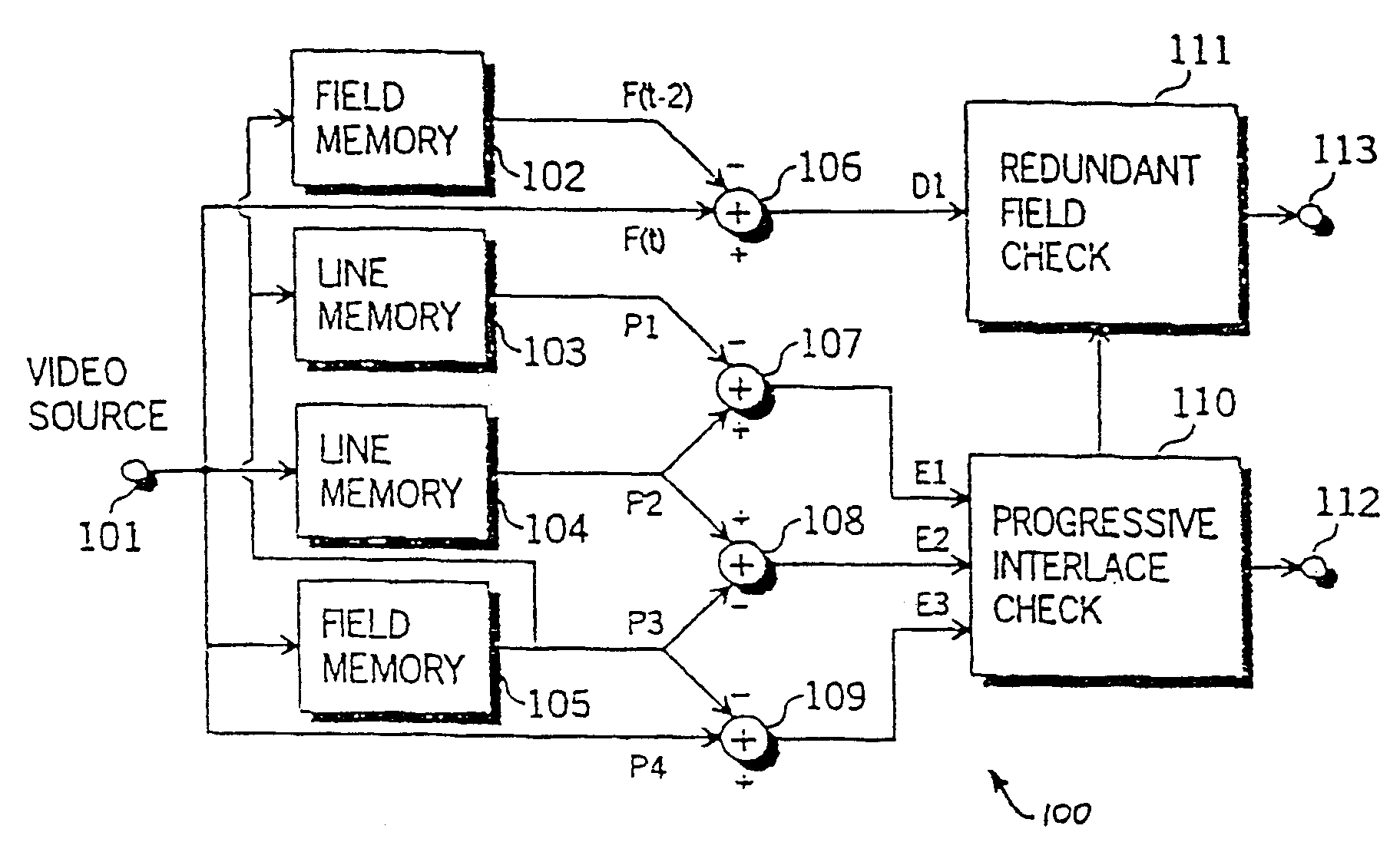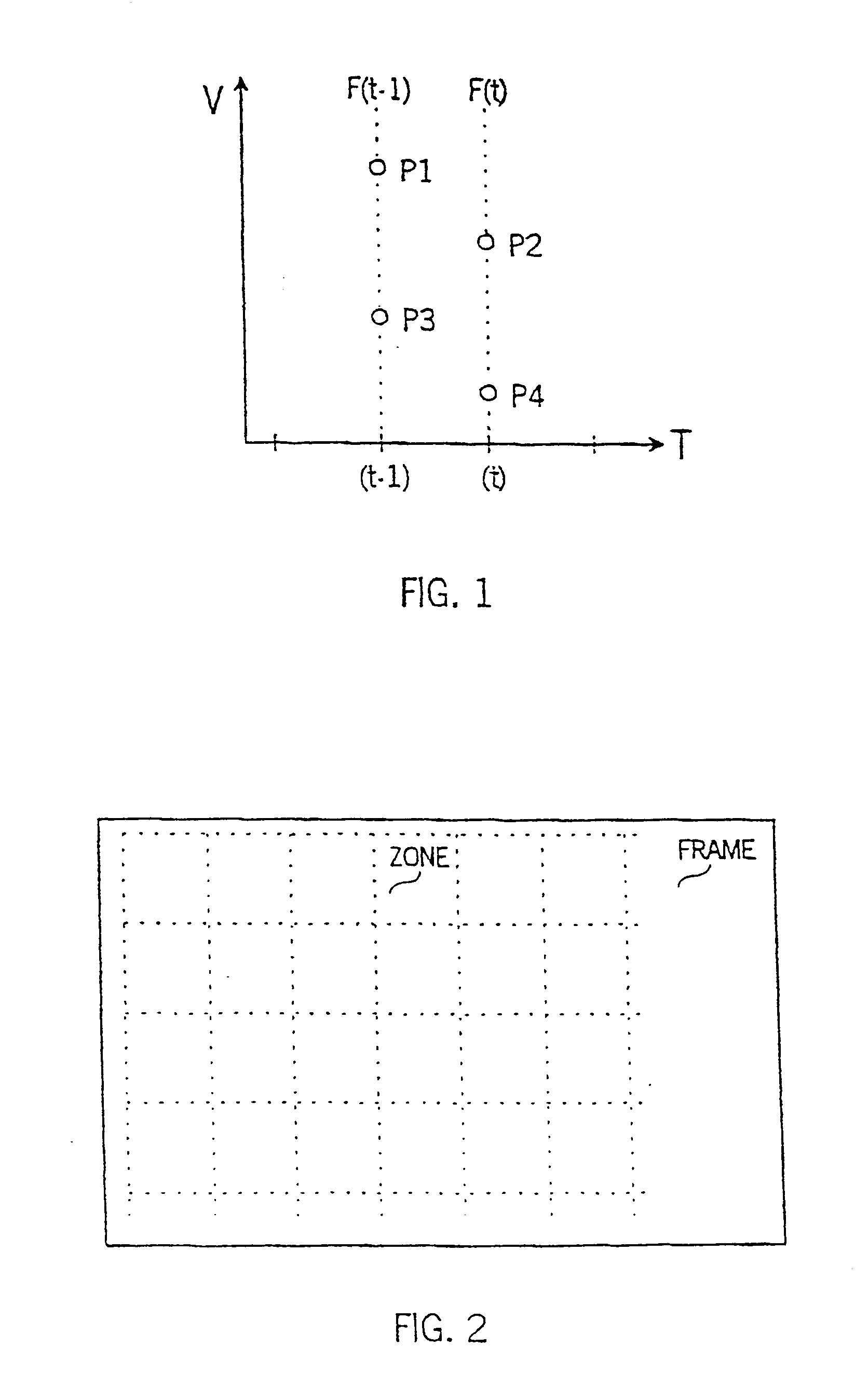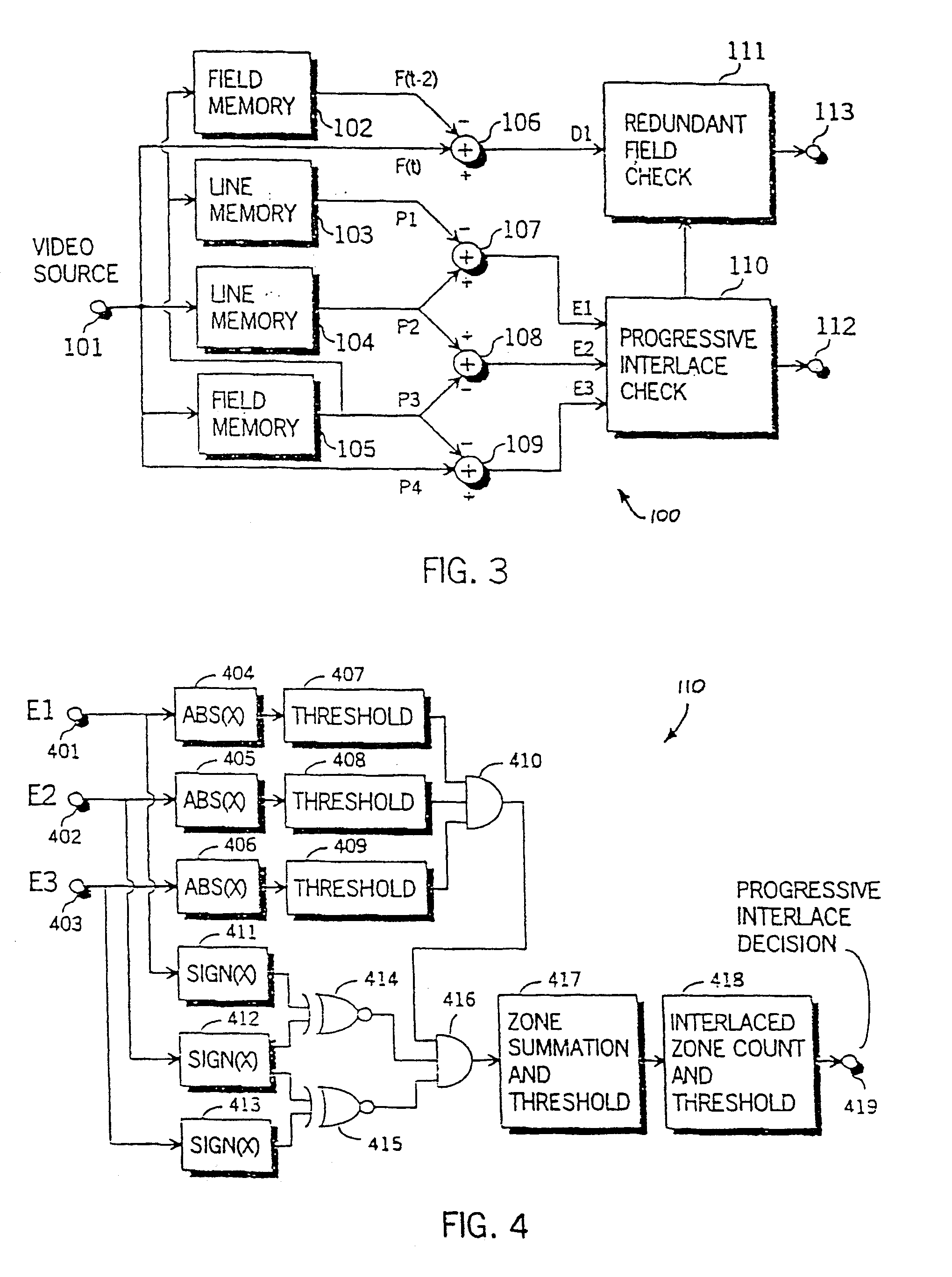Progressive/interlace and redundant field detection for encoder
- Summary
- Abstract
- Description
- Claims
- Application Information
AI Technical Summary
Problems solved by technology
Method used
Image
Examples
Embodiment Construction
A progressive / interlace and redundant field detector 100, as shown in FIG. 3, characterises an interlace pattern as being an object area with high inter-field differences, which is detected using four vertically adjacent luminance pixels from two successive fields from a video source. FIG. 1 illustrates an example of four luminance pixels for use in interlace pattern detection in a vertical / temporal plane. The pixels are labelled P1 to P4, wherein pixels P1 and P3 are obtained from a field F(t−1) at time (t−1) and pixels P2 and P4 are sampled from a field F(t) at time t. The differences between vertically adjacent pixels are obtained and compared to a threshold (T1) according to the following pseudo-code for interlace pattern detection:
if {(P1-P2)>T1 and (P3−P2)>T1 and (P3−P4)>T1}
or {(P2−P1)>T1 and (P2-P3)>T1 and (P4−P3)>T1}
interlace pattern detected.
The two successive fields are determined as interlaced if there are sufficient areas within the two fields containing interlace patter...
PUM
 Login to View More
Login to View More Abstract
Description
Claims
Application Information
 Login to View More
Login to View More - R&D
- Intellectual Property
- Life Sciences
- Materials
- Tech Scout
- Unparalleled Data Quality
- Higher Quality Content
- 60% Fewer Hallucinations
Browse by: Latest US Patents, China's latest patents, Technical Efficacy Thesaurus, Application Domain, Technology Topic, Popular Technical Reports.
© 2025 PatSnap. All rights reserved.Legal|Privacy policy|Modern Slavery Act Transparency Statement|Sitemap|About US| Contact US: help@patsnap.com



